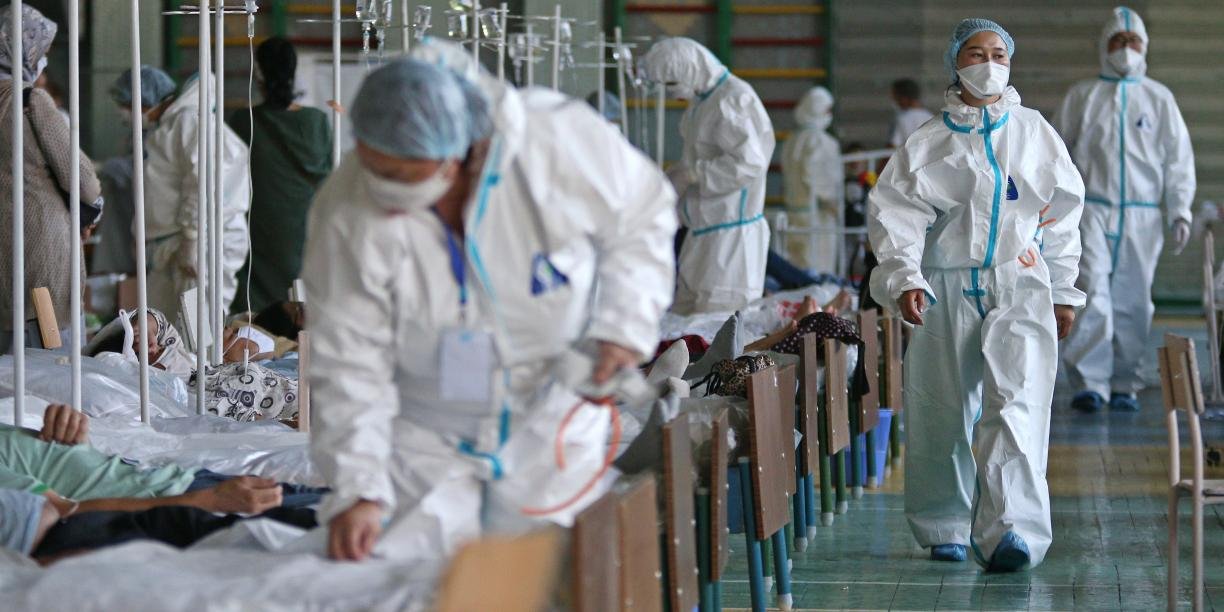IS MODERN MEDICINE THE ANSWER TO MODERN DISEASES?

“THE GREATEST WEALTH IS HEALTH”
Industrialization, modernization, modern medicine, and modern diseases, are mutually exclusive phenomena that may not be traced, analyzed, or understood without one another.
On their own, these words already strike a chord in your mind but in the perspective of your health and holistic living perhaps you may need more clarification.
It is believed that the modern world has had to battle many more diseases than it used to in old times. That modernization made living conditions easier but not happier nor healthier.¹ How true could this be? How do modernization and industrialization affect the proliferation of modern diseases? You would be amazed by the truth you are about to discover in this article and as usual, find helpful ways to escape the taunting menace of modern diseases.
How does industrialization affect health?

Over the last 300 years, the world has seen so much technological advancement than it recorded in over a thousand years and we could trace the speed to man’s drive for industrialization. Industrialization made day-to-day activities less taxing for mankind but it did not do so without gifting us with some worrying health problems. Let us consider a number of these health problems posed by industrialization quickly.
The World Health Organization revealed in 2016 that about 4.2 million people died prematurely from ambient air pollution every year with the majority of these deaths occurring in low-income and middle-income nations. Interestingly, these deaths can be traced to diseases caused by air pollution such as lung cancer, cancer of the urinary tracts, and other respiratory diseases.²
Looking back into history, these diseases were as scarce as the hot temperature in winter but industrialization brought about factories whose operations included filling the air we breathe with greenhouse gases like methane, nitrous oxide, nitrogen trifluoride, chlorofluorocarbon, carbon dioxides among others.
These gases are harmful when we breathe them in but that’s not the only harm they can cause. When they go up into the atmosphere, we tend to experience an increase in ambient temperature. What happens next is an unhealthy multiplication in the number of disease-causing organisms and a weakened immune system.

“WHILE MODERNIZATION OFFERS COMFORT, IT HAS BEEN IN SOME WAYS TO THE DETRIMENT OF HEALTHY LIVING.”
The air is not the only recipient of the negative effect of industrialization. It is reported that health problems such as eczema, catarrh. cough, skin infections, upper respiratory tract infections, and in serious cases carcinogenic health problems can be traced to the industrial production of cement.
Without going into details, contamination, pollution, toxification, and in some cases even radiation as a result of industrialization and modernization have very much damaged our environment.
Our waterways and groundwater are polluted with industrial waste, our fisheries with mercury, heavy metals, plastics, and garbage, our soil with chemicals and contaminants, and our minds, hearts, and souls with social media, entertainment, pop culture, and bi-products of “modern lifestyles.”
Industrial activities such as the processing of polymers, use of solvent, waste management processes, and the like have greatly affected the environment through toxification and as a consequence, our health.
Some of the modern diseases traceable to the direct adverse effect of industrialization include Lyme borreliosis. Tongue Fever, West Nile Fever, Leishmaniasis, Campylobacteriosis, Ross River Fever to mention a few.³
Industrialization happens not to be the only cause of proliferating health problems facing the world. Let us look at one other factor shortly.
How does modernization affect your health?

If you were alive a short time before the turn of the millennium, you will agree with me that a lot has changed with the way we live our lives. While modernization offers comfort, it has been in some ways to the detriment of healthy living.
The World Health Organization (WHO) reports that 60% of the factors which affect one’s health and quality of life can be traced to lifestyle choices.⁴ Going by this, modern lifestyle choices account for many health problems.
In the food industry, for instance, excessive use of preservatives and processing greatly affects our immune system by reducing the quality of nutrients we get from the food we eat. For instance, most available foods in modern markets undergo heating which kills active enzymes and certain nutrients only found in natural foods.⁵ The insufficiency of these nutrients in foods exposes the body to nutrient deficiency-related diseases.
Also, with the advent of sophisticated equipment and machines, people only have to engage in minimal drudgery to get tasks done. In old times, people had to engage their muscles in strenuous tasks to get life going for them.

We can see the advantages the “less modern lifestyle” had for mankind in the vitality of the Hunza people of Pakistan whose daily activities involve a lot of physicality in labor.
In modern times, however, the minimal involvement in physical activity has led to health problems such as high blood pressure, type2 diabetes, and coronary heart disease and may even lead to anxiety and depression as reported by Johns Hopkins Medicine.⁶ The equipment or gadgets also tend to expose us to health troubling radiation. Examples include watches that are made of radium and mugs that may contain uranium.⁷
The sector that provides us with food is not left out of the menace of modernization. Modern agriculture largely incorporates the use of chemicals for various on-field and post-harvest processes. Many health problems have been associated with human contact with these agrochemicals causing skin, digestive, neurological, respiratory, and even carcinogenic effects.⁸
Does modern medicine provide adequate succor for modern times?


Without a doubt, it is more challenging to live perpetually in vitality in these modern times. However, if you practice a lifestyle choice that guarantees more than holistic healthiness, you can be certain of achieving a life of vitality. As effective as holistic medicine is, this particular approach goes a step further to help you secure a healthy life from the core of your body system.
We all are made up of cells at the most basic level so it is only logical that if our cells are kept perpetually in vitality, all our body organs will also live in vitality giving us healthy lives. If your cells are being taken care of, you can be sure of achieving a life of wellness to enjoy the noble beauties of life to its fullest.
Final thoughts
In my book, Lead A Horse To Water, I explicitly explained how one can take care of cellular health, and interestingly you necessarily don’t have to see a physician to get that done. All you need is the information recorded in the book and your decision to enjoy a life of wellness. It takes health to enjoy the wealth of life; it takes vitality to enjoy the blessedness of every given day. At Holistic Live Younger, you can be sure of attaining such wellness to color all the days of your life with vitality.
Bibliography
- Sakr, N. (2021). “Lead A Horse To Water.” pp. 6.
- World Health Organization (22 September 2021). “Ambient (outdoor) air pollution.”URL: https://www.who.int/news-room/facts-sheets/detail/ambient-(outdoor)-air-quality-and-health
- Nehemiah Eremiye (2020). “The Effect of Industrialization and Chemical Use on the Health of Inhabitants.” REES Africa. Url: https://medium.com/carre4/the-effect-of-industrialization-and-chemical-use-on-the-health-of-inhabitants-c001f5e03a98
- Ziglio E, Currie C, Rasmussen VB. (2004). The WHO cross-national study of health behavior in school-aged children from 35 countries: findings from 2001 – 2002. J School Health, 74 (6): 204 – 206.
- Health Dangers of Modern Food Production. Food Editorial. URL: https://www.streetdirectory.com/food_editorial/health_food/health_eating/health_dangers_of_modern_food_production.html
- Johns Hopkins Medicine. “Risks of Physical Inactivity.” URL: https://www.hopkinsmedicine.org/health/conditions-and-diseases/risks-of-physical-inactivity
- “Surprising Sources of Radiation in Household Items.” This OldHouse. URL: https://www.thisholdhouse.com/green-home/21018112/radiation-sources-in-household-items
- World Health Organization (1990). “Public Health Impact of Pesticides Used in Agriculture.” England: World Health Organization
- Aseem Malhotra (2018). “Why Modern Medicine is a Major Threat to Public Health.” The Guardian. URL: https://www.theguardian.com/society/2018/aug/30/modern-medicine-major-threat-public-health
- Harris Interactive and ARiA Marketing (2000). “Healthcare Satisfaction Study Final Report.” URL: http://www.harrisinteractive.com/news/downloads/HarrisAriaHCSatRpt.PDF